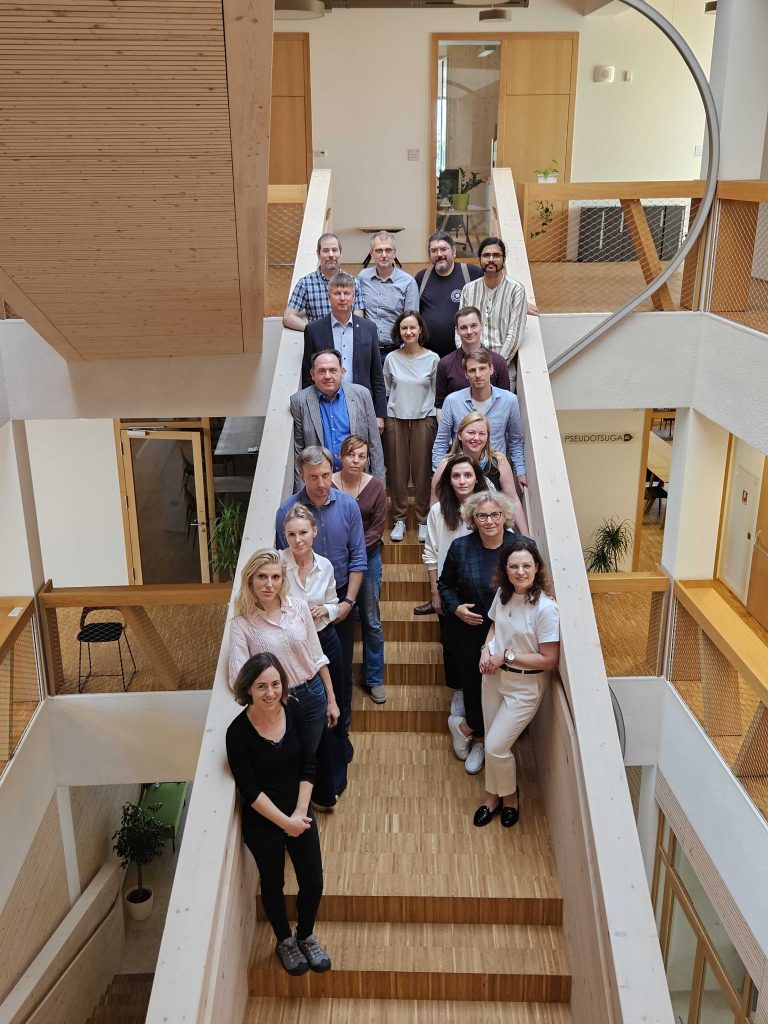
October 22, 2024


Morandise Rubini, guest researcher at InnoRenew CoE, PhD student at Université de Pau et des Pays de l’Adour; main area of research: analytical chemistry
I was born in Martinique, a French island (overseas department) located in the Caribbean. I spent all of my childhood and adolescence in Martinique. Thereafter, I went to France, more precisely to Paris, to begin my university studies in chemistry. Now I live in the southwest of France where I am PhD student. And more currently, as part of my PhD, I am visiting InnoRenew CoE for a three-month period.
When I started my studies, I dreamed of becoming a high school physics and chemistry teacher. And the more I advanced in the concepts of physics and chemistry, the more I liked chemistry, in the sense of material analysis. So, during my bachelor’s degree, I chose to major in analytical chemistry. I took the same field during my master’s degree (MRes), with a speciality in chemometrics. Chemometrics is almost essential in analytical chemistry to master statistical and mathematical tools.
The work of researchers (as a PhD student) consists, above all, of finding solutions to the problems posed. Beyond this mission, what is most interesting is to compare your ideas with those of others, to gain skills and knowledge, to participate in conferences, to promote your work, and above all, when you get prizes, it’s much more rewarding.
My PhD student work consists of developing new solutions to be able to analyze matter in a much faster and more reliable way. The keys to this success are spectroscopy (interaction between light radiation and matter) and mathematical models!
There is no typical working day; it depends on the deadlines.
Some days, I am in the laboratory to do experiments, other days I analyze my data, yet other days I do scientific valuation (writing articles, summaries for conferences, etc.); sometimes I do administrative things or even teach undergraduate students.
For sure, most of my time is in the lab.
When I start from zero.
This moment, when I do the bibliography to find out more about the subject — what has already been done — in order to bring something new, and exclusive!
This moment is often accompanied by discussion with the people who follow the project. And then, ultimately, the results of all the work.
The biggest would be to juggle with three different specialities: wood science to understand the raw material, and to be able to choose the best analytical techniques; spectroscopy to understand the interaction between light radiation and matter; chemometrics to create mathematical models that are the most suitable.
I would say Marie Curie for her work on rare radioactive substances because this has allowed the development of new applications in many fields, including medicine.
All Marie Curie accomplishments: first female to be a Doctor of Physical Sciences, to have obtained the Nobel Prize, and also, to hold two Nobel Prizes.
Photography has a preponderant place in my life. I’ve been doing photography since I was a teenager. My first camera was a Praktica MTL 5, a film camera that I purchased used. I am a fan of black and white photography, even though I haven’t done much for years. I have always admired the work of Sebastião Salgado, his relationship to humanity, and the actions he has undertaken in this direction for many years. In the same vein, I can also speak of Yann Arthus-Bertrand’s work. More recently, I got into aerial photography because it brings another dimension to the photos. Slovenia is a great playground to practice.
I am currently reading a book on Instagram and the art of having followers (Ah-ah!). I’m not interested at all, but many people are pushing me to create a public Instagram account to show my photos and some videos.
The last album that I listened to and appreciated was Be Right Back from Jorja Smith. I am currently watching Lupin (with Omar Sy) on Netflix.
In a nutshell, from everything I have been able to visit so far, I really have this feeling of nature! Slovenia is definitely a green country.
Piran is the most beautiful town on the Slovenian coast. I love narrow and colourful streets that remind me of those of beautiful Mediterranean villages. Thanks to their narrowness, these small streets are in the shade and their coolness is pleasant when it is hot.
I get very enthusiastic when I see a good photo series. Whether it is from me, or from someone else. It is still a bit complicated to define how to characterize a good series of photos, but I always assume that behind each photo there is a story.
Always stay calm.
Wood is a material that brings warmth to its environment; it is comforting, relaxing. I sometimes listen to and watch videos of wood burning in a fireplace.